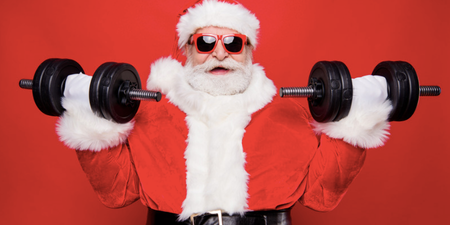On Saturday night, Anthony Joshua relinquished his world title to a man with a much higher body fat percentage.
Andy Ruiz Jr was widely ridiculed before the fight for his body shape. The Mexican actually revelled in his pre-fight diet, which consisted mainly of Snickers bars. But this criticism proved wide of the mark when Ruiz stopped Joshua in the seventh round.
Joshua is renowned for the excellent physical condition in which he turns up for fights. Many believe he wouldn’t even look out of place on the bodybuilding stage. However, this result questions just how important your body shape is as a marker of overall fitness.
Does your body shape really dictate how fit you are?
We asked a top exercise scientist for his thoughts. Jim Kerss is a Sports and Exercise Medicine Consultant at The Manchester Institute of Health & Performance (MIHP).
Kerss was quick to point out that your level of body fat doesn’t necessarily mean you’re unfit.
“There is good evidence you can be overweight and still physically fit,” he said.
Research has shown that it is better to be overweight and physically fit rather than thin and unfit.”
Similarly, being ripped doesn’t say a lot for your overall fitness levels either.
“This may just be a consequence of having a low body fat percentage, and does not necessarily mean the individual is physically fit.”
Send me a dm please. Let’s go snickers!!🥊 https://t.co/XFcVA8rRnY
— AndyRuizJr (@Andy_destroyer1) June 3, 2019
What do we mean by ‘fitness’?
We asked Kerss to explain the best methods for analysing fitness levels.
“This can be assessed with a range of tests dependent on a range of factors, such as what sport or physical activity the person is taking part in, age and what area of fitness you are wanting to assess.”
Kerss says that there are different types of fitness.
“Aerobic, muscular endurance, power or strength, for example, all of which require a different assessment. You can also be deemed ‘fit’ in one area but not in another – for example, having excellent muscular strength but low aerobic fitness.”
Aerobic fitness says more about your cardio performance and endurance than anything else. It’s difficult to assess this by looking at someone’s muscle mass and level of body fat.
Kerss says: “A well recognised way of assessing a person’s aerobic fitness is through a VO2 max measure, but again, this only gives you an insight into the person’s aerobic fitness.”
This is not to say you should lose sight of your weight. There are clear dangers of being too lean or too overweight.
The dangers of being overweight and underweight
“At the extremes of being underweight or overweight, there are significant health consequences,” Kerss adds.
“Our focus should be on achieving and maintaining a healthy weight, and being physically active in line with the UK guidelines on physical activity.”
It can be useful to have fat loss as a fitness goal, but Kerss says you shouldn’t obsess over this.
“For anyone wanting to become more physically active, it can be helpful to have a goal to motivate you.
“But we should try and shift the focus away from just a weight target, or even thinking of weight and physical fitness as the same thing.”
Simply staying active is the most important factor for boosting your fitness levels.
Kerss says: “We can gain significant health benefits for the prevention of a large range of medical conditions from being physically active – irrespective of your weight, which doesn’t have to be the primary focus.”
LISTEN: You Must Be Jokin’ with Aideen McQueen – Faith healers, Coolock craic and Gigging as Gaeilge























































